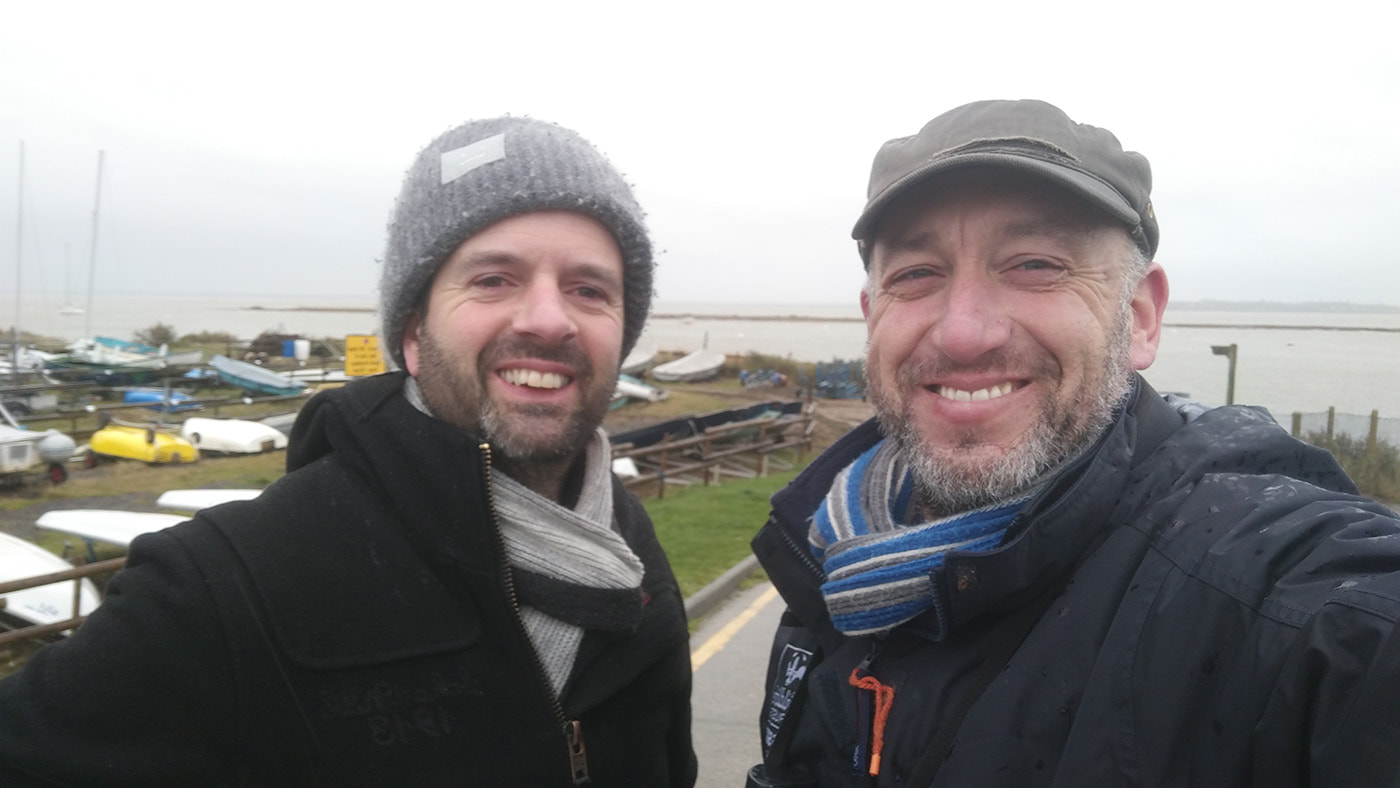|
Today I went for a walk with Marc Outten, Reserves Manager with the Essex Wildlife Trust, along the coastal path from Bradwell Riverside around the top of the Dengie peninsula to St.Peter’s Chapel, to discover what inspires him to take such a keen interest in the natural world and, of course, to see what birds we could spot. It was reasonably windy, and rain was forecast but we agreed to continue anyway and almost immediately Marc spotted a Cetti’s Warbler in the hedges. He has had a keen interest in birds since he was a small boy and owned a pair of binoculars since the age of 7 and it certainly showed as he identified a whole host of birds within the first 50 meters of the sea wall. Over the course of the last few projects I have been involved in, including The River Runs Through Us (with Ruth Philo) and River of Words I have met a great deal of people who have a love of the natural world and a passion for the conservation of it. Whether that be in a professional role or as an enthusiast, a lot of people enjoy the beauty and freedom of being out of doors. There is an increasing acknowledgement that being outside, and within the natural environment, is good for us on many levels, keeping our minds and bodies fit, but also on a more existential level by connecting us to the place and time in which we live. Many people however do not engage with their local surroundings, wildlife, the weather, and society as a whole has in fact become less connected with the natural world, and therefore, the consequences upon it of our actions. I could of course include myself in that but in recent years I have made a concerted effort to re-engage, to slow down, stop for a while, listen, look, absorb. Marc seemed thoroughly engaged, not only with birds that we could see, but with wider land usage, erosion, climate change, birding and twitching networks, annual and seasonal cycles, different habitats and plants. He spoke passionately and knowledgeably about all of these topics as we walked beside the river and towards the sea, and I’ll be expanding on some of these themes later in the blog. We did not see the Peregrines today, which was a touch disappointing, but we did see a Kestrel hunting on the sea wall for quite some time, and at close quarters, which was impressive. As we rounded the corner to head south, the weather started to close in and the cold rain became more driving. Taking notes became more difficult (I had to dry my notebook out on a heater) and photos even more so. We did however see quite a few more birds at close quarters, including Reed and Corn Buntings, which made me happy as I confirmed that the birds I had seen before at Tollesbury were indeed Corn Buntings. We also saw a rock pipit, which, as a small brown bird, was indicated mainly by its behaviour and the setting in which it was seen.
All in all we had a great walk and I learned a lot about the landscape and wildlife around us. The work of Marc, the Essex Wildlife Trust and many like them cannot be underestimated and their roles seem increasingly important as pressures mount both ecologically and politically. We could certainly all help them by doing something positive in our everyday life to contribute to the solution, and not the problem.
0 Comments
Leave a Reply. |
Details
AuthorInspired by J A Baker's The Peregrine, recording the sonic landscape around the River Blackwater, Essex. Funded by Arts Council England's Develop Your Creative Practice grant 2019 - 2020. Archives
December 2023
Categories |


 RSS Feed
RSS Feed
